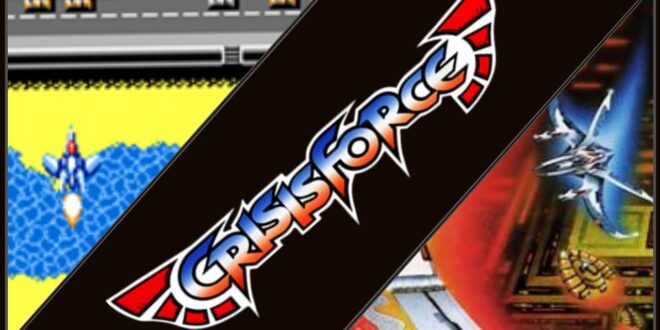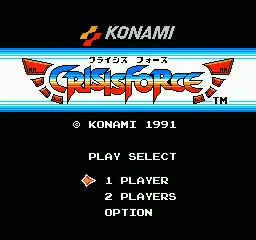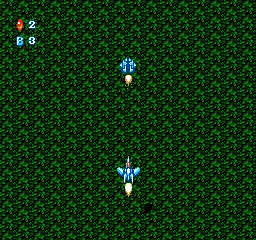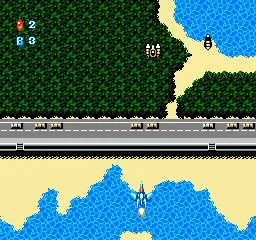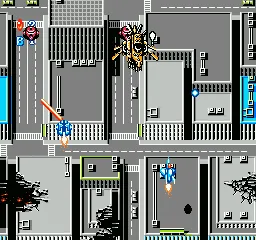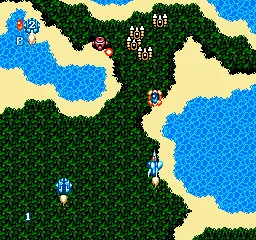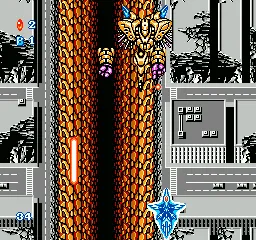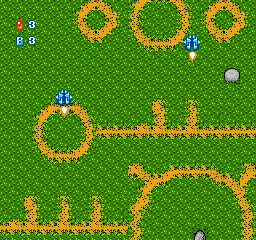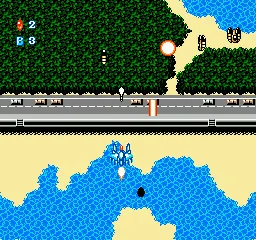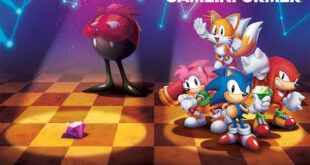Crisis Force: A Deep Dive into NES Excellence
Crisis Force is not just a game; it’s an exemplar of the technical marvels that were possible on the Nintendo Entertainment System (NES), despite being released in the twilight years of the console’s life. This shoot ’em up, released exclusively in Japan in 1991 by Konami, has since garnered a dedicated following among retro gaming enthusiasts around the globe.
Technical Mastery by Konami
Konami, already well-known for their classic titles, pushed the envelope with Crisis Force. They exploited every ounce of capability within the NES, employing their proprietary VRC4 chip. This chip provided enhanced visual and audio capabilities, which allowed for features like:
- Larger, more detailed sprites.
- Advanced scrolling background layers, contributing to a pseudo-3D effect.
- An expanded color palette for richer on-screen graphics.
- Additional audio channels for a more complex and engaging soundtrack.
This was a game that stood out not just for its gameplay but also for its technical achievements.
The Soundtrack: An 8-Bit Audio Odyssey
The soundtrack, often an unsung hero in gaming, was pivotal to Crisis Force’s immersive 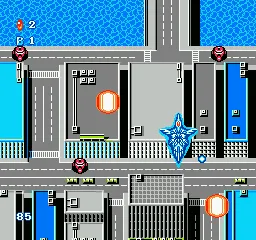 experience. It featured complex compositions that were rhythmically intense and melodically rich, setting it apart from many other NES titles. The sound design took full advantage of the VRC4’s capabilities, resulting in a score that was both memorable and mood-setting.
experience. It featured complex compositions that were rhythmically intense and melodically rich, setting it apart from many other NES titles. The sound design took full advantage of the VRC4’s capabilities, resulting in a score that was both memorable and mood-setting.
Crisis Force’s music, while not as well-known as other Konami classics, stands on its own as a powerful example of 8-bit composition. The soundtrack, composed by Kenichi Matsubara, Jun Funahashi, and others, offered a riveting backdrop to the on-screen action. Each stage’s theme drove the intensity of the game, with driving bass lines and soaring melodies that matched the high-octane gameplay.
Gameplay Innovation: Transformations and Strategy
Crisis Force introduced a transformation mechanic to the shoot ’em up genre. Players controlled the Asa, a ship with the ability to morph into multiple forms, each with distinct weapons and defenses. This transformative approach allowed players to adapt their strategy in real-time to the challenges presented by the game. Other gameplay highlights included:
- Co-op mode where two players could team up, each piloting their own ship.
- A dynamic difficulty adjustment system that responded to the player’s skill level.
- Hidden power-ups and bonuses that encouraged exploration and experimentation.
Cultural Impact and Rarity
Crisis Force’s release was confined to Japan, making it a rare title for Western gamers. However, its quality has elevated it to a cult status among collectors and retro gaming aficionados. The game’s scarcity, combined with its reputation as a hidden NES masterpiece, has made it a sought-after item for those wishing to experience the full breadth of the NES library.
A member of the “Retro Replay” community, Haruto Tanaka, comments:
“Crisis Force was a revelation. At a time when the NES was on its last legs, it showed us that the system still had some surprises left. The speed, the transformations, the sheer beauty of it—it was like a love letter to fans of the shoot ’em up genre.”
Legacy and Influence
While Crisis Force didn’t have a direct sequel or spawn a franchise, its influence can be seen in later shooters that adopted its innovative features, such as variable ship modes and dynamic difficulty. Its legacy is that of a game that pushed the NES to its limits, showcasing what was possible when a developer refused to be constrained by the perceived limitations of the hardware.
Key Facts About Crisis Force
- Crisis Force was one of the few NES games to use the VRC4 chip, enhancing its graphics and audio.
- It was one of the last significant releases for the NES as the gaming industry transitioned to the 16-bit era.
- Crisis Force remains exclusive to the Famicom (the Japanese version of the NES) and has never been officially released or ported to other systems or regions.
In Conclusion
Crisis Force is a testament to the ingenuity of Konami and the potential of the NES. Its technical achievements, combined with innovative gameplay mechanics, create an experience that remains impressive decades after its release. For enthusiasts looking to explore the depths of NES gaming, Crisis Force is a must-play title.
For those interested in learning more about this remarkable game, resources such as detailed retrospectives, gameplay videos, and the Wikipedia page for Crisis Force provide valuable insights into its development, impact, and legacy.
As a hidden gem and a benchmark in NES gaming, Crisis Force exemplifies the heights that creativity and technical skill can reach, even on hardware that was considered to be on the verge of obsolescence. It stands as a shining example of what can be achieved when innovation meets execution, and remains a high point in the annals of retro gaming history.
The verdict.
Graphics - 98%
Sound - 93%
Gameplay - 94%
Replay value - 88%
93%
Crisis Force was a revelation. At a time when the NES was on its last legs, it showed us that the system still had some surprises left. The speed, the transformations, the sheer beauty of it—it was like a love letter to fans of the shoot 'em up genre.
 Retro-Replay.com Retro gaming reviews, news, emulation, geek stuff and more!
Retro-Replay.com Retro gaming reviews, news, emulation, geek stuff and more!
